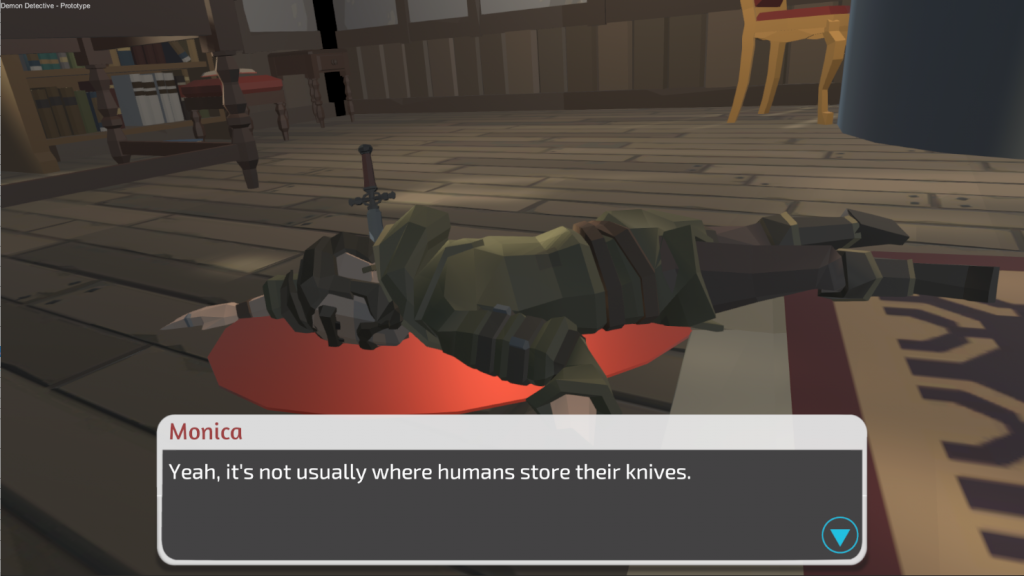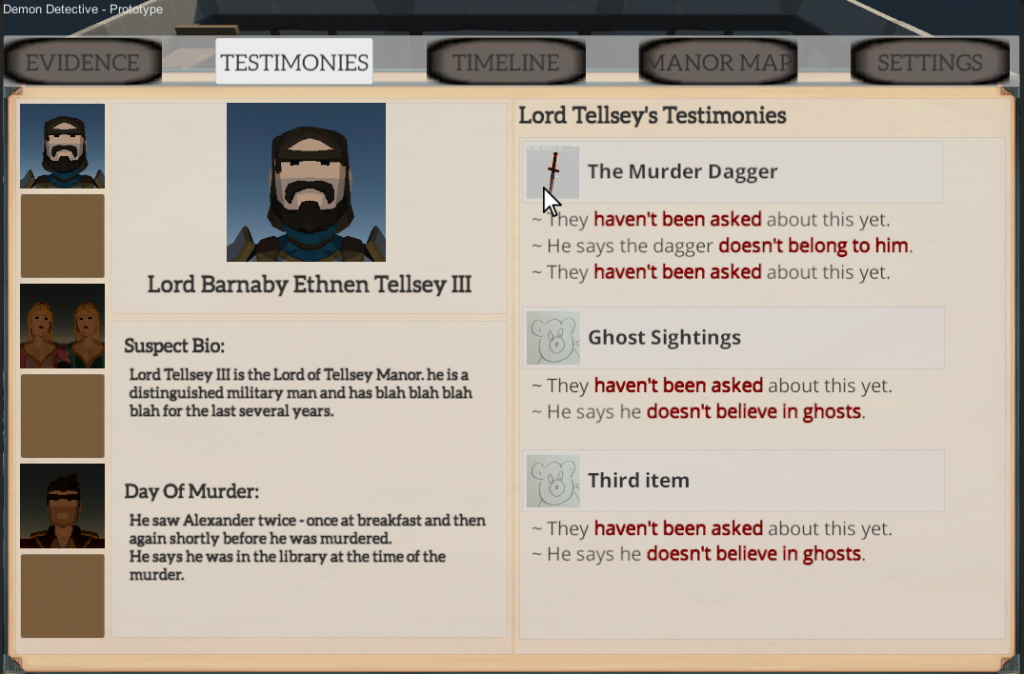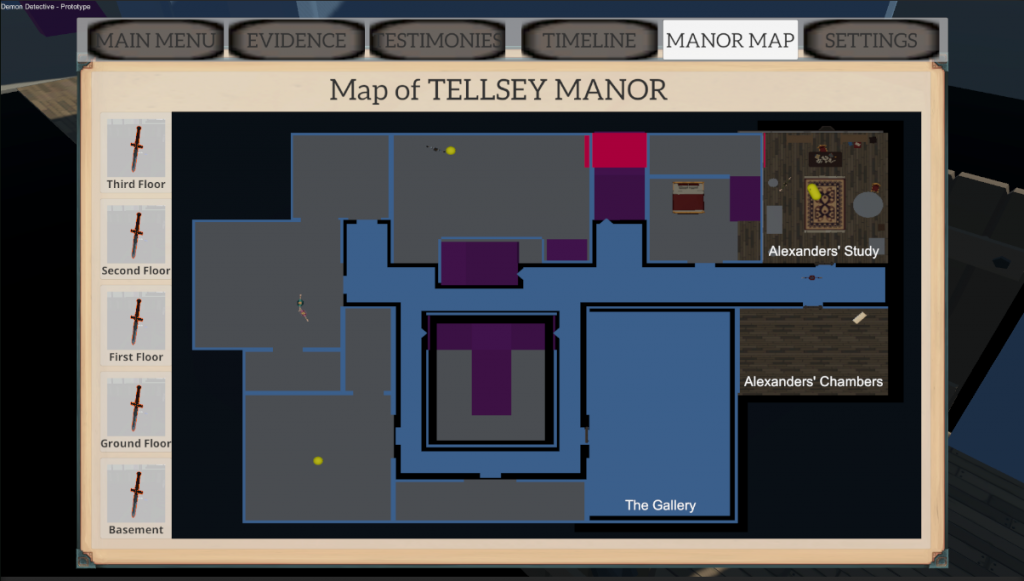My Prototypes: Demon Detective
Hello again! In my last post I did a ‘bloggers crutch’ and threw together a bullet-point list of prototypes I have been working on over the last few years.
After writing that, I figured it would be interesting for you, and useful for me, to go into a bit more detail about each of them. It gives you some insight into the types of games and processes I’m using, and writing about them helps me focus on what I’ve already done, what I still need to do and, to be quite frank, whether I’m still interested in them. Let’s face it, if it’s a struggle for me to hold the motivation to write 500 words about a game idea, it’s unlikely I could spend 1-2 years making the entire thing.
So, I’ll kick things off with the oldest and most progressed prototype of the bunch, Demon Detective: The Ghost of Tellsey Manor.

I did most of the work on this prototype back in 2022/3. I created a functional 3D manor house with dynamically loading floors and rooms as you point-and-clicked to move around it, one partial investigation of a crime scene, two dialogue scenes – one conversation and one interrogation – and a mostly-functional journal that allowed you to drag and drop words from evidence gathered to compare it against other evidence to find conflicts or to confirm your findings.
However, after getting that far I finally realised the massive number of assets and work that would be required to finish it off. Something that if I attempted by myself would take years. As a result I decided to ‘park’ it for the time being.

Fast-forward to 2025 and when I decided to work on a set of smaller prototypes, I decided to resurrect this one to see if I couldn’t cut down the scope in some way.
To start with I upgraded from Unity 2022 to 6000, which took some time and some bug fixing and associated asset updating. Eventually I had it all more-or-less working as it was previously. However, for the original prototype I used Fungus, a no longer supported visual novel (VN) creator for all the dialogue trees and logic.
As part of the update, I switched to Dialogue System which I’m more familiar with, and decided to combine it with Articy 2, a dialogue/game narrative tool. But even though Articy was fairly quick to get to grips with, I encountered problems exporting the data in a way that correctly functioned in the game. It does have an export option that supports Dialogue System, but I kept getting outputs that had broken logic.

BUT the biggest design issue I have, and have had since the start, is I can’t decide how to present the game! Currently, it has a top-down-at-an-angle camera view with the player point-and-clicking to move around the manor house, but I have also experimented with direct control movement as an option. Then when it switches to the dialogue scenes, there is a set of close up camera angles, still in 3D.
Creating the whole game in 3D, however, is part of the original reason I paused development – that’s going to take a lot of work in terms of extra assets, not to mention 3D character animations for the dialogue scenes. So I’ve been debating with some other options, including having no movement around the manor house at all, but instead clicking on the map to go directly to an ‘unlocked’ location, and/or having 2D character and location art (similar to most other VNs) instead of 3D characters, or some mix of both, i.e. 3D locations with 2D characters on top.

The actual investigation, how you uncover evidence and expose conflicts using the journal etc., is pretty settled, it’s the presentation that’s the sticking point for me. Which is weird, I usually figure out that side of it immediately and then work outwards from there, but I just can’t settle on what to do for this one. I know that a fully 2D VN style would be ‘less work’ in terms of time spent creating assets, but even so it’s still a big chunk of art. And it’s work I can’t personally do. The 3D level design and asset placement is something I can do myself, but would take longer.
And I guess that’s the choice really: spend a lot of time myself creating 3D assets and animations, or pay someone else to create a bunch of 2D backgrounds and character art.
So, the next steps are some experimentation with Articy export settings and getting some support with the tool if I can’t get it to do what I want, and then trying out some presentation styles as examples to see if I prefer one over the other.
Bye for now!
Tony.